Latest News
Mass Transit as a Platform for Science Learning
Posted by on February 27, 2015 at 12:32 PM EDT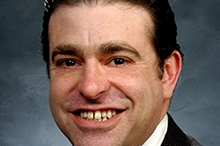
David Lustick is being honored as a Climate Education and Literacy Champion of Change.
A significant body of research substantiates the drivers and impacts of human-induced climate change. While schools help young people understand basic science, how do adults learn about new and relevant scientific concepts (like climate change) after graduation? Many rely on news sources for general information, but few seek in-depth sources for science understanding. How can the general public learn about important scientific discoveries? How can they become knowledgeable about emerging scientific issues? These are the questions that drive both Cool Science and Sciencetogo.org, two collaborative projects that use public mass transit as a milieu for informal science learning.
Cool Science uses children’s artwork to engage the local community with climate science. The project is a collaboration between University of Massachusetts Lowell, University of Massachusetts Boston, Anastas Advertising, and the Lowell Regional Transit Authority. Each year, we hold an art competition in the Commonwealth of Massachusetts, where students from grades K-12 are encouraged to express their ideas and questions about climate change through the visual arts. The best submitted artwork is then displayed in and on local buses. As the buses travel their routes, the community can see, consider, and reflect upon young people’s ideas about climate change. With 5,000 riders per day and 500 participating artists annually, Cool Science engages both formal and informal audiences. Initially supported through a University of Massachusetts’ Creative Economy Grant, Cool Science now also includes corporate sponsors, such as United Parcel Service. Our goal is to continue to foster such partnerships and bring Cool Science to other communities across the Commonwealth and the nation.
ScienceToGo.org also uses mass transit as its platform for learning about climate change. This partnership features a 12-month multi-media learning campaign staring “Ozzie the Ostrich,” who appears on posters and placards placed on Massachusetts Bay Transit Authority (MBTA) train cars and station platforms. Riders follow Ozzie on his story of awakening to the reality, relevance, and current solutions to the climate change challenge. This campaign brings the power of an effective science exhibit to the daily routines of the commuting public. With a website and social media hosted by the Museum of Science (MOS) and ad space donated by the MBTA, this National Science Foundation-funded project harnesses the power of marketing to engage 400,000 daily riders with free-choice learning options about climate change.
Both Cool Science and ScienceToGo.org represent innovative efforts to transform the daily routine of a person’s life into entertaining science learning opportunities. A big part of these projects’ success can be attributed to our cross-disciplinary approach. A team of partners from a number of universities and institutions helps to build our work through ScienceToGo.org and fosters effective science communication and engagement. Together, we build relationships between the private, public, and non-profit sectors for the common good of our respective communities.
David Lustick is a National Board certified teacher and an Associate Professor of Science & Math Education at the University of Massachusetts Lowell’s Graduate School of Education.
Learn more about Energy and Environment"How Low Can We Go?" A Fun Challenge for U.S. Schools to Reduce Energy Consumption
Posted by on February 27, 2015 at 12:28 PM EDT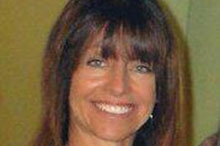
Linda Gancitano is being honored as a Climate Education and Literacy Champion of Change.
Back in 2008, I was watching the Oprah Winfrey Show as she showed snippets of the documentary, An Inconvenient Truth. My eyes just happened to catch a scene that would change my world: the swimming polar bear who couldn’t reach another iceberg because the sea ice was melting. As the polar bear drowned, I found myself crying and thinking, this is wrong. This shouldn’t be happening. That image stayed in my mind for a long time.
In November 2008, I formed a Green Team at Driftwood Middle School (DMS) in Hollywood, Florida. Our team consisted of three teachers and three student leaders. The team has since tripled in size, and the school’s culture is visibly environmentally friendly. In fact, that was a primary objective of our first initiative: we created a visual board so that the entire school could track monthly energy usage.
Next, we raised awareness of energy conservation via the "How Low Can We Go?" Challenge—an initiative that later became partners with the Miami Heat during NBA’s Green Week to impact 64 Broward County Public Schools, the sixth-largest district in the country. If any partner could raise awareness of reducing CO2 emissions, it was the Miami Heat, voted one of the top "green" sports teams in the country.
Our first Energy Team, better known as the "DMS Chillers," walked from room to room after school looking for classrooms with lights left on. The students would leave a painted paw print (in memory of the polar bear) on the door saying, “You’ve been Chilled!” as a reminder to teachers to turn off lights when they left for the day. Our teachers and custodial staff started to get really involved in conserving energy. No teacher wanted a big paw print on their door on Monday morning!
Next up, the Green Team took to creating an Energy Audit Team that ventured into classrooms and made suggestions to the teachers and other students on how to conserve energy. Last year's new initiatives included the "Are You S.E.K.C.?" (Stopping Excessive Kilowatt Consumption) and the "Are You a H.E.R.O.?" (Helpful Energy Resource Officer) campaigns. The students hand out green H.E.R.O. bracelets when they catch a teacher or another student conserving energy. Since the Green Team was formed in 2008, the school has seen a 23% decrease in emissions. Our greatest challenge in decreasing energy even further is technology, an antiquated cooling system that needs to be replaced. DMS continues to expand our alternative energy education by including future projects, such as solar power and a wind turbine, to the curriculum. The tradition of the DMS Chillers lives on, impacting our 1,600 students and faculty.
So, How Low Can You Go?
Our partnership with the Miami Heat initially has enticed schools to rise to the challenge of reducing their environmental footprint. Not only by raising awareness of the effects of CO2 emissions but also educating the facilities on potential financial savings through responsible energy consumption. Curtailing wasteful spending on unnecessary energy consumption has the added benefit of allowing schools to allocate those saved dollars to under-funded programs. In the one-month pilot program in February 2014, we saved over $34,000 in energy costs and reached over 90,000 faculty and students. This school year, with 87 schools registered for the challenge, the impact will reach over 100,000. Future possibilities include South Florida's Tri-County Area and the whole country!
Won't you join us?
Linda Gancitano is a Physical Education and Wellness educator at Driftwood Middle School in Broward County, Florida.
Learn more about Energy and EnvironmentA Generation of Hope
Posted by on February 27, 2015 at 12:24 PM EDT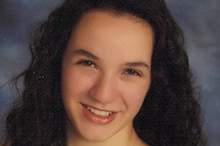
Gina Fiorile is being honored as a Climate Education and Literacy Champion of Change.
It is an honor to be selected as a White House Champion of Change because I am representing countless students and youth leaders who work tirelessly to combat climate change.
My generation is one of subtle controversy. Recent advances in technology have been openly accepted by youth, and because of this, we have become the most social generation in history. Our interconnectedness may come with a few negative effects, but there are also significant positive outcomes that result from our social nature. We are more mindful, more aware, and have more opportunities to support each other.
My passion for climate education began in high school, where I became involved in the annual Adirondack Youth Climate Summit. This two-day conference is held at a local science museum where students from across the Northeast gather to learn about climate change and create climate action plans to implement in their schools. Not only do students have the opportunity to learn from renowned climate scientists, but they are also able to build a community around their environmental passions and connect socially. This summit changed my life in that it inspired me to dedicate my career to the cause. It also opened the eyes of thousands of students. It is has been adopted as a model for similar programs across the country as part of the White House’s Climate Education and Literacy Initiative, and has spread internationally. My peers and I had the opportunity to be featured in a PBS documentary titled “The Resilient Ones,” which followed us throughout the planning process. After my experience at the Summit, I was inspired to take on a number of projects including waste reduction, the building of a greenhouse and school garden, the local farm-to-school movement, and communications with the community. My work and motivation is an example of the outcomes of successful climate education.
I do not believe it is a coincidence that the generation I am a part of has arrived at the same time in history as human-induced climate change. We now have the tools we need to communicate the effects of climate change and fully understand the science behind it. We have the capacity to build a network around climate science and climate education in the battle for sustainability.
It is time we take advantage of the opportunities we have created for ourselves to fight this battle with full force. An attitude of realism as opposed to negativity is what will carry us through. It is important that we look to future generations as a source of hope when we feel discouraged by setbacks on the road to sustainability. Our greatest defense in this fight is an increase in climate literacy, so that future leaders are better prepared to catalyze positive change.
Climate change is one of the greatest challenges we have faced because it is an issue that will impact every single human being and living thing now, and for millions of years to come. If this is the case, how can we not do everything in our power to combat it? In accepting our responsibility to educate future generations by utilizing all of the resources we have, the next generation will be more capable to combat this challenge. They are a source of hope during this period of ecological and social change.
Gina Fiorile is a freshman Environmental Studies Major in the Rubenstein School of the Environment and Natural Resources at the University of Vermont.
Learn more about Energy and EnvironmentNational LGBT Elder Housing Summit
Posted by on February 23, 2015 at 6:37 PM EDTOn February 10, the White House Office of Public Engagement welcomed 100 service providers, advocates, community leaders, and Administration officials who are dedicated to supporting the needs of our aging LGBT community members.
As the number of Americans age 65 and older surges over the next few decades, the number of LGBT older adults is estimated to double to 3 million by 2030. By this year – 2015 – one in two individuals who are HIV-positive in this country will be over age 50. Many struggle to find welcoming and affordable housing.
The National LGBT Elder Housing Summit was a unique opportunity for the White House to bring together the LGBT community and the aging network to discuss the intersecting challenges communities across the country have faced in providing affordable, welcoming, and supportive housing to LGBT older adults and older adults living with HIV/AIDS. Through panel discussions and open dialogue, experts from far and wide talked about some of the most pressing needs for the LGBT aging population, as well as successful, creative programs and services.
Young Native Americans Share School Culture Experiences with Secretary Duncan
Posted by on February 18, 2015 at 8:48 PM EDTEd. note: This is cross-posted on the U.S. Department of Education's blog. See the original post here.
While many students face challenges when it comes to growing up and pursuing academic success, Native American and Alaskan Native youths are more likely than most of their peers to experience poverty and trauma, and to drop out of high school. Their school environment has a significant role in their development.
This is just one of the reasons why ED recently invited 15 young Native Americans to attend a Student Voices Session with Secretary Duncan.
This session was also a capstone to ED’s first-ever School Environment Listening Tour, a nine-city tour in seven states designed to identify the impact of school environment on young Native Americans.
Affordable Care Act: Enrollment Opportunity for American Indians and Alaska Natives
Posted by on February 13, 2015 at 8:09 PM EDTEd. note: This is cross-posted on the U.S. Department of Health and Human Services' blog. See the original post here.
The deadline to enroll in 2015 coverage through the Health Insurance Marketplaces is February 15. I urge all American Indians and Alaska Natives to go to HealthCare.gov, call 1-800-318-2596, or visit localhelp.healthcare.gov to see what benefits are available to you and to ensure that you have health coverage for 2015.
As an American Indian and Alaska Native, you may be eligible for services through the Indian Health Service (IHS), but the local facility may not be able to provide certain health care services, or you may live too far away to access those services. If you do not have other health insurance coverage, such as Medicare, Medicaid or CHIP, I encourage you to make sure you don’t miss the open enrollment deadline.
American Indians and Alaska Natives who are Tribal members can still enroll after February 15, but if not, your only chance to enroll to purchase health insurance coverage for 2015 is during the open enrollment period, which ends in two days!
If you are a member of a Tribe or are eligible for IHS, you can apply for an exemption from maintaining health coverage, but I hope you at least check to see what your benefits are under the Affordable Care Act before the enrollment deadline. You might find out that you can purchase a really great insurance plan for a very small monthly cost based on your income, and you might qualify for no out-of-pocket costs if you are a member of a federally-recognized Tribe.
Please don’t miss the deadline on February 15 and #GetCovered!
Yvette Roubideaux, M.D., M.P.H., is the Senior Advisor to the Secretary for American Indians and Alaska Natives.
The White House Launches the “Generation Indigenous Native Youth Challenge”
Posted by on February 12, 2015 at 7:32 PM EDTToday, Director of the White House Domestic Policy Council Cecilia Muñoz announced the launch of the Generation Indigenous Native Youth Challenge at the 2015 United National Indian Tribal Youth (UNITY) Midyear Conference. This challenge invites Native youth and organizations across the country to become a part of the Administration’s Generation Indigenous (Gen-I) initiative by joining the National Native Youth Network — a White House effort in partnership with the Aspen Institute’s Center for Native American Youth and the U.S. Department of the Interior.
President Obama launched the Gen-I Initiative at the 2014 White House Tribal Nations Conference to focus on improving the lives of Native youth by removing the barriers that stand between Native youth and their opportunity to succeed. Through new investments and increased engagement, this initiative takes a comprehensive, culturally appropriate approach to ensure all young Native people can reach their full potential.
In addition to the National Native Youth Network, the Gen-I Initiative includes a demonstration program called the Native Youth Community Projects, administered by the Department of Education, a restructuring of the Bureau of Indian Education, a Cabinet Native Youth Listening Tour, and the organization of the first ever White House Tribal Youth Gathering.
Also announced today was the signing of an agreement between UNITY, the Department of Justice’s Office of Juvenile Justice and Delinquency Prevention, and the White House, to collaborate on the first ever White House Tribal Youth Gathering that will take place this summer.
We encourage everyone to take the Gen-I Native Youth Challenge and become a part of the National Native Youth Network today!
Gen-I Native Youth Challenge
As part of the process of establishing the National Native Youth Network, we invite Native youth and all young people across the country to take part in the Gen-I Challenge. This call to action is the first step in engaging a broad network of people interested in addressing the issues facing Native youth and creating a platform through which Native youth can access information about opportunities and resources, and have their voices and positive contributions highlighted and elevated.
Here’s how it works: Youth 14-24, non-profits, and educational institutions are invited to join the National Native Youth Network by accepting the Gen-I Challenge.
Who: Individuals, youth councils, and youth groups can participate as Challenge Acceptors. Non-profit organizations, Colleges, Universities, and Tribal Colleges and Universities (TCU) can become acceptors by helping their youth and students complete the Gen-I Challenge!
Youth and others can accept the challenge by following this link and committing to take the following steps.
Step 1: ACT. Within 30 days of taking the challenge, youth should work with other youth in their community or at their school to do something positive of their choosing (for example: completing a volunteer project with a local organization or charity, hosting a meeting with other youth to brainstorm how to address an issue of concern in their community, or becoming a mentor to a younger person). The youth can use toolkits from the National Native Youth Network and their partners to help them achieve their goal. Their local tribal youth council, urban tribal youth group, or Native youth organization can also be a resource.
Step 2: CAPTURE. Youth should document their community efforts and projects through a short summary (3-4 sentences) with photos and video!
Step 3: SHARE. Youth should share their stories online using #GenI and send the National Native Youth Network their story through www.cnay.org/Challenge.html. The National Native Youth Network or the White House may even feature their story.
Step 4: PARTICIPATE. By participating in the National Native Youth Network, youth may be invited to apply to send a representative to the first ever White House Tribal Youth Gathering in Washington, D.C., in the summer of 2015.
Organizations, colleges, universities, and TCUs can take the Gen-I Challenge too by committing to help their youth and students complete the Gen-I Challenge! They just follow this link to get signed up.
The following organizations have already committed to take the Gen-I Challenge and get their youth onboard.
Gen-I Native Youth Challenge Early Acceptors
- American Indian College Fund
- American Indian Higher Education Consortium
- Boys and Girls Clubs of America
- Center for Native American Youth at the Aspen Institute
- Close Up Foundation
- National Congress of American Indians
- National Indian Child Welfare Association
- National Indian Education Association
- National Indian Health Board
- United National Indian Tribal Youth
The Promise We Make: My Brother’s Keeper Initiative and Expanding Access to Career Pathways for Youth
Posted by on February 12, 2015 at 1:27 PM EDTDuring last month’s State of the Union address, President Obama discussed the significant progress made over the past year to strengthen ladders of opportunity in America -- including the best stretch of job growth in over a decade, wages on the rise again, and 10 million Americans newly insured under the Affordable Care Act.
With these achievements in mind, he also understands that what makes this country exceptional is not just our economy or global influence, but also the promise we make to our children: “the idea that no matter who they are, what they look like, where they start, how much their parents earn, they can make it if they try.”
To help keep this promise, the President launched My Brother’s Keeper, an initiative to address opportunity gaps and tear down barriers that too often prevent young people from realizing their full potential. He also established a Task Force with representatives from across the federal government to issue recommendations aimed at improving the life outcomes of all young people from cradle to college to career.
Today, that Task Force is announcing a new resource guide that will help employers to access a variety of federal tools that make hiring youth easier.
Young people continue to face steep challenges in entering the workforce. The U.S. unemployment rate recently fell to its lowest point in six years, yet the youth unemployment rate remains higher than double the national figure. During the summer months, when the youth labor force peaks, unemployment rates among African American youth (24.8 percent) and Hispanic/Latino youth (16.5 percent) are significantly higher than among their white counterparts (12.2 percent). Higher education reduces the likelihood of unemployment, but even among college graduates, African American youth are more than twice as likely to be unemployed as white youth.
The cumulative effects of youth unemployment are significant -- a young person who has been unemployed for an extended period of time can face a substantial reduction in future earnings with one estimate anticipating a loss of around $22,000 over the next decade. Some estimates put the loss to the U.S. economy from youth unemployment at billions of dollars each year due to lower earnings, incarceration costs, and social service expenditures.
The good news is that today, there are 5 million open jobs in America -- more than at any point since 2000. Many of these jobs are in high-growth industries like information technology, advanced manufacturing and health care that offer career pathways to meaningful, satisfying, and well-paying work, an opportunity that all Americans should be able to access.
Below are recent examples of how the federal government is partnering with local communities to provide young people with access to the tools and opportunities they need to succeed in the workforce.
- Pathways for Youth Employment: Federal Resources for Employers: Thisresource guide highlights a diverse set of federal resources available to private businesses, non-profits, faith and secular community-based organizations, public agencies, tribes, labor organizations, and academic institutions that offer entry-level opportunities for youth. Featured resources include One-Stop Career Centers, Federal Bonding, YouthBuild, Registered Apprenticeship and Job Corps programs administered by the U.S. Department of Labor, and AmeriCorps grants administered by the Corporation for National and Community Service.
- American Apprenticeship Grants: In December 2014, President Obama and Secretary of Labor Tom Perez announced a $100 million American Apprenticeship Grant competition for public-private partnerships, including employer-led and state/regional consortia, to expand registered apprenticeship programs in specific high-growth industries, such as health care, biotechnology, information technology, and advanced manufacturing. These grants are designed to encourage greater access to apprenticeship opportunities for historically underrepresented populations, including young men and women of color, persons with disabilities, low-skilled populations, veterans, and others. The competition, open today, can be accessed here. The deadline to apply for an American Apprenticeship Grant is April 30, 2015.
- Federal Resources Playbook for Registered Apprenticeship: This playbookwas released by the U.S. Department of Labor to help employers, educational institutions, training providers, and workforce development professionals leverage more than $50 billion a year in federal funding in support of apprenticeship programs.
If you’re interested in learning more about the My Brother’s Keeper initiative and how to get involved, please visit WhiteHouse.gov/My-Brothers-Keeper.
Roy L. Austin, Jr. is Deputy Assistant to the President for Urban Affairs, Justice and Opportunity in the Domestic Policy Council. Byron G. Auguste is Deputy Assistant to the President for Economic Policy and Deputy Director of the National Economic Council.
Learn more about
- &lsaquo previous
- …
- 9
- 10
- 11
- 12
- 13
- 14
- 15
- 16
- 17
- …
- next &rsaquo

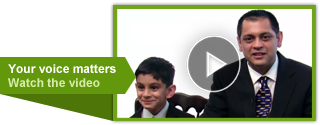
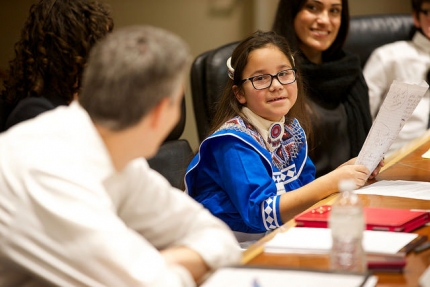
Twitter